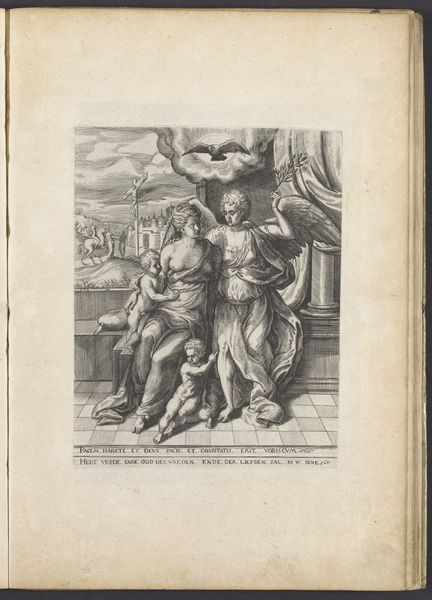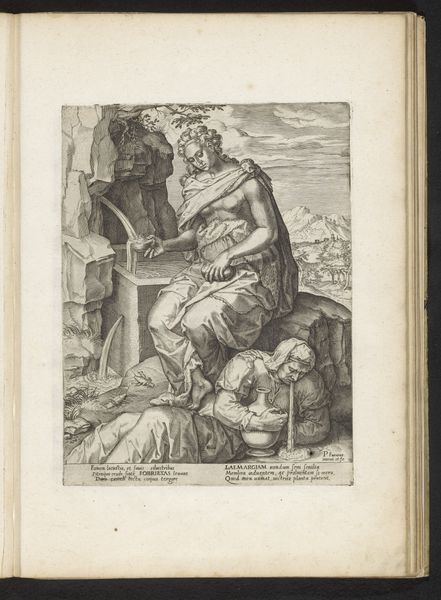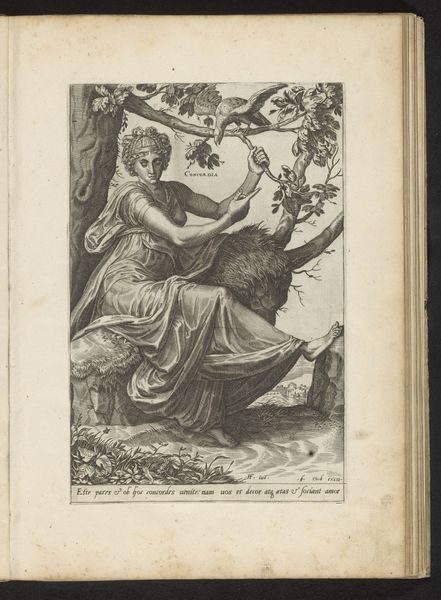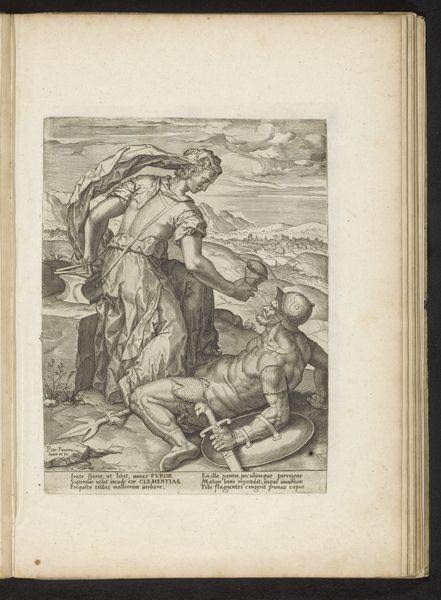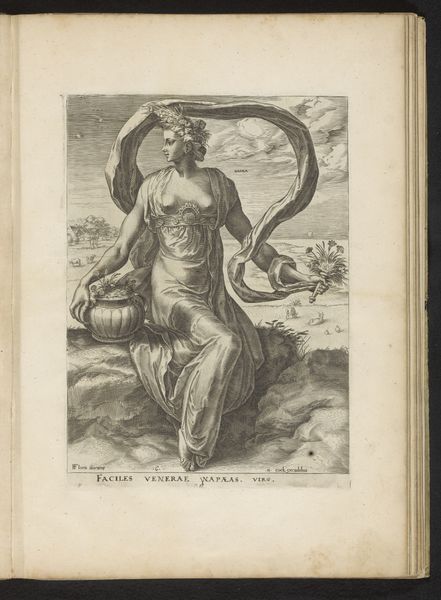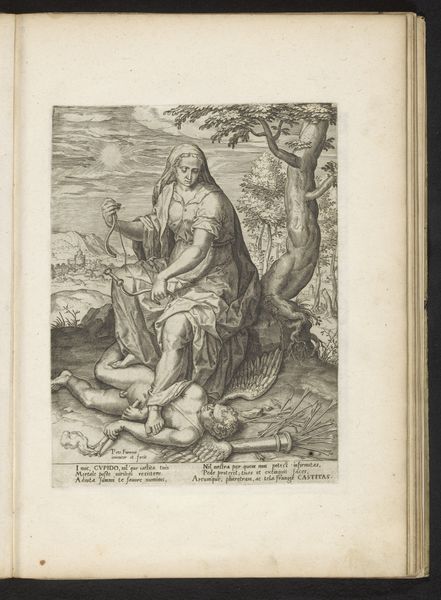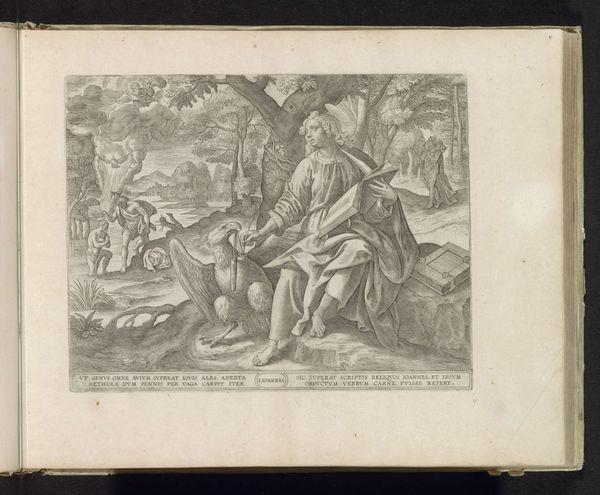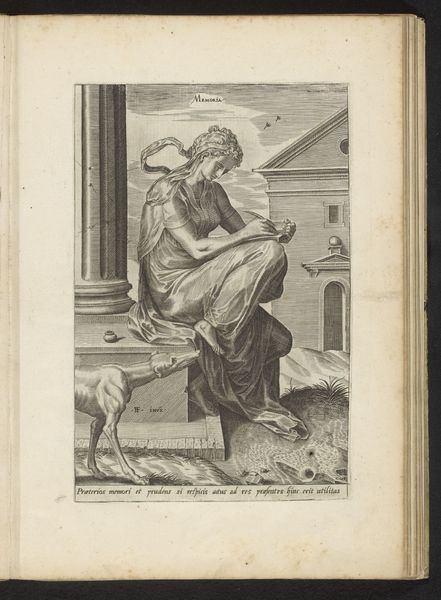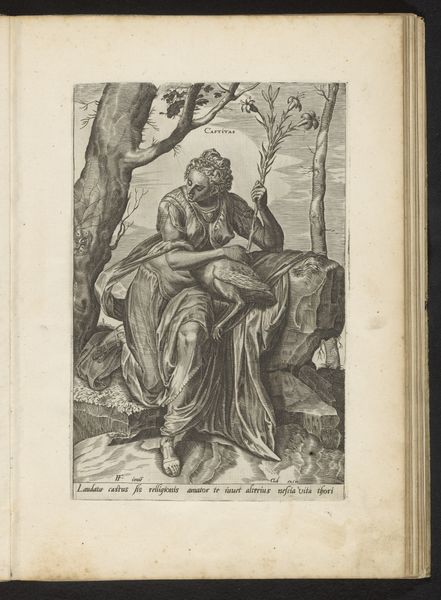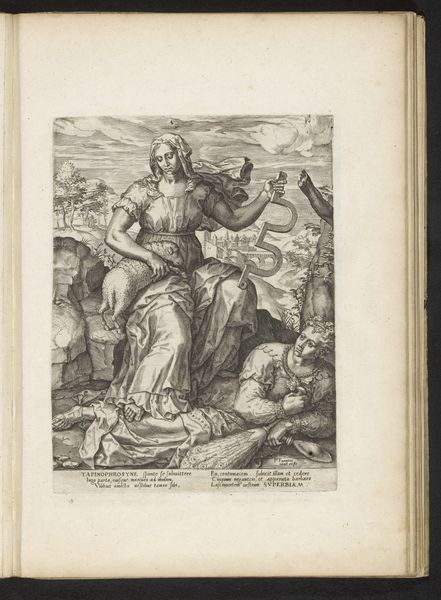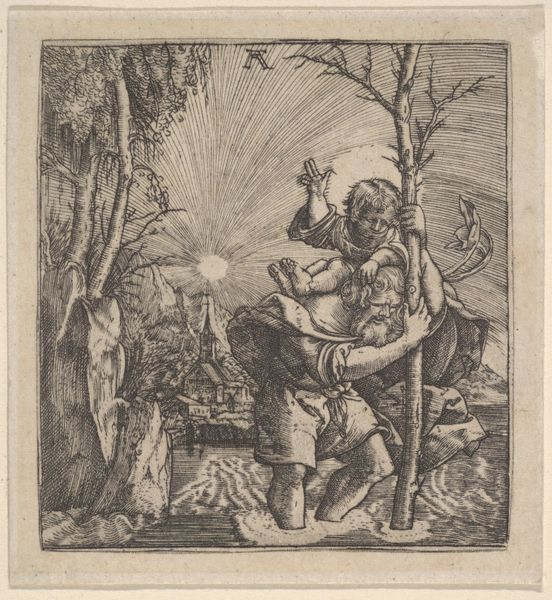
print, engraving
#
portrait
#
allegory
# print
#
figuration
#
form
#
line
#
history-painting
#
italian-renaissance
#
engraving
Dimensions: height 255 mm, width 196 mm
Copyright: Rijks Museum: Open Domain
Curator: Looking at this engraving, entitled *Liefde overwint Afgunst*, or *Love Conquers Envy*, likely produced between 1550 and 1625 by Pieter Jalhea Furnius, my immediate response is one of classical serenity challenged by baroque drama. Editor: The high contrast immediately catches the eye; that deep shadow really emphasizes the figures in the foreground. You can almost feel the texture of the laid paper, though that may just be the printerly mark itself! Curator: Exactly. Note the allegorical symbolism at play here. Charity, or Love, represented by the woman nursing children, sits triumphant, while Envy, emaciated and chained, is subdued at her feet. The imagery echoes traditional Renaissance depictions of virtue overcoming vice. Editor: You can see the artist has chosen line engraving here; the depth and precision achievable offer control and also the ability to reproduce and distribute widely. It makes one wonder where it may have travelled, and what social strata would have come into contact with the allegory here. Curator: Absolutely, that speaks to the didactic function. The symbols were deeply embedded in cultural understanding—Charity as a societal ideal, Envy as its antithesis. Furnius visually embodies this moral lesson, providing not just a surface image but a psychological narrative. Editor: How interesting that he utilizes a medium that would be replicated in multiples to advance a subject so fraught. But here we have both the technical reproducibility alongside allegorical reference: in effect, it can make the private life subject to moral accounting. Curator: Indeed! It underscores the power of images to reinforce social values and moral structures, as cultural narratives are visualized through print. Editor: Yes, it definitely encourages reflections on our current production and consumption patterns of these older, handcrafted objects and how far away our contemporary engagement with morality is from what is shown in *Liefde overwint Afgunst*. Curator: I see how this image encapsulates a moment when faith, society and humanism converge in a powerful statement of hope, despite being constrained by a black and white print medium. Editor: For me it is always fascinating to recognize that these objects were so carefully wrought by skilled artisans. We must also keep in mind this context as part of their historical, cultural meaning.
Comments
No comments
Be the first to comment and join the conversation on the ultimate creative platform.
